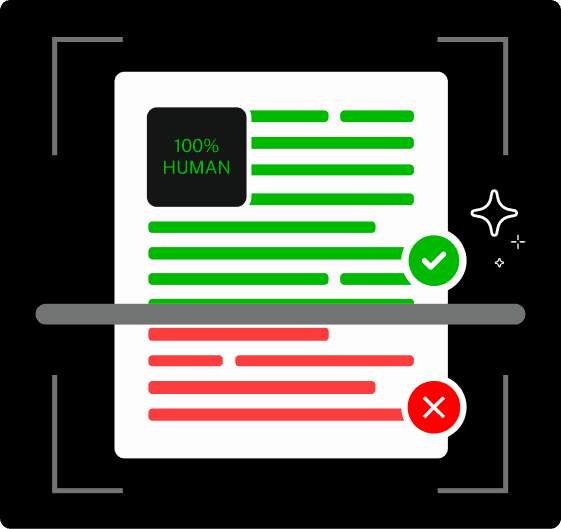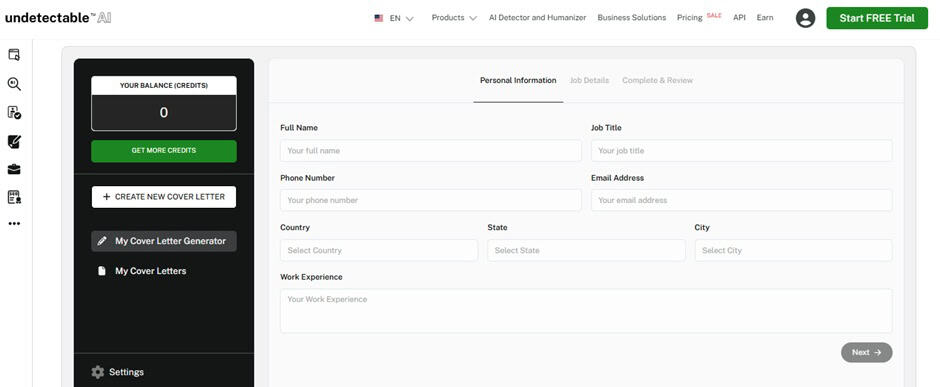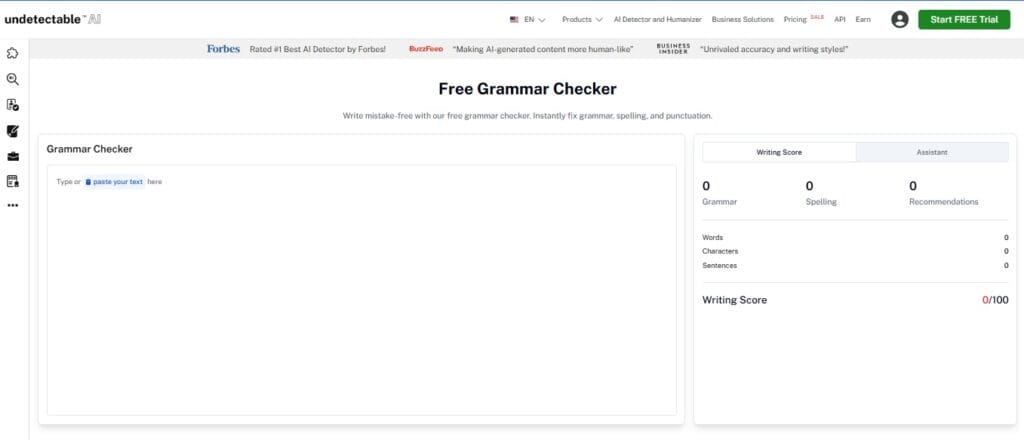One of the biggest decisions of your career isn’t what career path you’ll choose, but how to navigate knowing that where you are at the moment isn’t where you want to be anymore.
A career change can be exciting, but it can lean more toward scary, especially since you’re sacrificing what you already have for something unknown.
Millions of people switch careers every year. Some do it because they’re burned out. Others because they finally figured out what they actually want to do. And some? They just need a fresh start.
The cover letter is your chance to tell that story. It’s where you explain why you’re making the leap and why someone should take a chance on you.
Sure, you don’t have 10 years of experience in this new field. But you have transferable skills and real-world experience—and your cover letter needs to show that.
This guide walks you through everything you need to write a career change cover letter that actually makes an impact.
We’ll cover structure, what to include, real examples, and tips that’ll make your application stand out.
TL;DR
A strong career change cover letter addresses your transition head-on. It often highlights transferable skills that prove you can do the job, even without direct experience.
Focus on achievements that apply across industries, not just tasks you completed. Show genuine motivation for the switch, as hiring managers can spot fake enthusiasm from a mile away.
Keep it concise, around 250 to 400 words max, and use tools to polish your writing and make sure it’s error-free before you hit send.


Never Worry About AI Detecting Your Texts Again. Undetectable AI Can Help You:
- Make your AI assisted writing appear human-like.
- Bypass all major AI detection tools with just one click.
- Use AI safely and confidently in school and work.
Key Takeaways
- A career change cover letter should confidently explain your transition and highlight transferable skills.
- Focus on achievements and results that apply across industries, not just job duties.
- Address the shift early, connect your past experience to your new field, and show clear motivation.
- Keep it concise (250–400 words) and tailor each letter to the company and role.
- Tools like Undetectable AI’s Cover Letter Generator, Smart Applier, and Resume Builder simplify the process.
Explaining Your Career Shift With Confidence
The worst thing you can do in a career change cover letter is to act apologetic.
Don’t say “I know I don’t have experience in this field, but…” That immediately puts you on the defensive. It tells the hiring manager you’re already doubting yourself.
Instead, own your transition. Talk about it like it’s a strategic move, because it is.
You’re not running away from something. You’re running toward something better.
Start by addressing the career change directly in your opening paragraph. Don’t make them guess. Don’t bury it in the third paragraph. Get it out there early.
Something like: “After five years in marketing, I’m transitioning into UX design because I’ve discovered my passion lies in creating user-centered digital experiences.”
See? That’s confident, clear, and tells them exactly what’s happening and why.
Next, connect the dots between your old career and your new one. This is where a lot of people mess up, as they think their previous experience is irrelevant, so they barely mention it.
Your past experience is your selling point, because it’s what makes you different from every other entry-level candidate.
Maybe you were a teacher and now want to be a project manager.
You have communication skills, have managed classroom projects, and have dealt with difficult stakeholders, even if they were parents instead of clients. That all translates.
The key is framing. Don’t list your old job duties. Instead, show how those experiences prepared you for this new role.
Every career change cover letter should answer one question: “Why should we hire someone without direct experience?” Your job is to make that answer obvious.
Structure of a Career Change Cover Letter
Your career change cover letter follows the same basic structure as any cover letter.
But the content needs to work harder.
- Opening Paragraph: Introduce yourself and state the position you’re applying for. Mention your career change right away. Keep this to three or four sentences max.
- Second Paragraph: This is your “bridge” paragraph. Connect your previous career to the new one. Highlight transferable skills and explain how your background actually makes you a stronger candidate.
- Third Paragraph: Get specific. Talk about why you want to work at this particular company. Reference something about their mission, recent projects, or company culture that resonates with you. Show that you did your homework.
- Fourth Paragraph (optional): Use this if you need to mention additional qualifications like certifications, courses, or volunteer work in your new field. Don’t include this if it makes your letter too long.
- Closing Paragraph: Express enthusiasm for the opportunity. Include a call to action, like requesting an interview. Thank them for considering your application.
The whole letter should fit on one page.
Three to five paragraphs total. Around 250 to 400 words. Anything longer and you’re losing their attention.
Remember that hiring managers spend only about seven seconds scanning your profile before deciding whether to read it. Your structure needs to be clean and easy to skim.
What to Include in Your Career Change Cover Letter
Not everything from your work history belongs in your cover letter.
You need to be selective and focus on the stuff that matters for your new career.
Here’s what actually needs to be there.
Transferable Skills From Past Roles
Career changers have the advantage of bringing fresh perspectives. You essentially have unique skills that other candidates don’t have.
Let’s say you’re moving from retail management to human resources.
You’ve got conflict resolution skills from dealing with difficult customers, understand scheduling and labor laws, and have trained new employees.
You’ve managed inventory budgets, which means you can handle HR budgets.
Or maybe you’re leaving accounting to become a data analyst.
You already know how to work with numbers, understand reporting and compliance, are detail-oriented, and can spot errors in massive datasets.
The trick is identifying which skills transfer and then discussing them in a way that makes sense for your new field.
Don’t use jargon from your old industry, but translate your experience into language that resonates with your new one.
Achievements That Apply Across Industries
Achievements are more powerful than responsibilities. Anyone can say they “managed a team,” but numbers make your achievements real.
Examples: “Increased customer satisfaction scores by 35%,” “Led a cross-functional team of eight,” or “Reduced operational costs by 20%.” Focus on results that align with your new role.
Relevant Courses, Certifications, or Training
If you’ve done anything to prepare for your career change, include it. Online courses, certifications, freelance work, and volunteering all count.
Even self-taught skills and side projects prove commitment to your new path.
Clear Motivation for the New Career Path
Your motivation must be specific and genuine. Explain what drew you to this new field and why now. Maybe a project, hobby, or experience inspired the change.
Real examples like mentoring entrepreneurs or learning data tools show a clear, believable transition. Your motivation should answer, “Why this career, and why now?”

Need help pulling all this together? Tools like Undetectable AI’s Cover Letter Generator can give you a solid starting point.
Once you input your information, a draft will be created based on proven templates. You still need to personalize it, but it saves you from staring at a blank page.

The Smart Applier tool can also help you tailor your cover letter to specific job postings. It analyzes the job description and suggests which skills and experiences to emphasize.
That’s huge when you’re applying to multiple positions and need to customize each letter.

And if your resume needs an update to match your new career direction?
The Resume Builder helps you restructure your experience to highlight what matters most for your target role.
Career Change Cover Letter Example
Here’s what a solid career change cover letter actually looks like in practice.
Lucy Chen
sarah.chen@email.com | (555) 123-4567 | LinkedIn.com/in/lucychen
March 15, 2025
Hiring Manager
TechForward Solutions
123 Innovation Drive
San Francisco, CA 94105
Dear Hiring Manager,
I’m writing to apply for the Junior Product Manager position at TechForward Solutions. After six years as a high school science teacher, I’m transitioning into product management because I’ve discovered that my passion lies in building educational technology that actually serves students and teachers.
Throughout my teaching career, I’ve essentially been a product manager without the title. I identified user needs by listening to student feedback and observing learning gaps. I designed curriculum solutions, tested them in the classroom, and iterated based on results. I collaborated with administrators, parents, and other teachers to implement new programs. Last year, I led the rollout of a new learning management system for our entire school, training 40 teachers and 600 students while gathering feedback to improve adoption.
I’m particularly drawn to TechForward because of its focus on K-12 education software. Your recent case study about increasing student engagement through gamification aligns with strategies I’ve used successfully in my own classroom. I understand the frustrations teachers face with clunky interfaces and features that look good in demos but fail in real classrooms. I want to help build products that actually work for the people using them every day.
To prepare for this transition, I completed a Product Management certification through General Assembly and have been working with a local edtech startup as a volunteer product consultant. I bring a unique combination of deep user empathy, experience implementing technology in schools, and a genuine commitment to improving education through better tools.
I’d love to discuss how my teaching background and product skills can contribute to TechForward’s mission. Thank you for considering my application. I look forward to speaking with you.
Sincerely,
Lucy Chen
See how that works? She addresses the career change immediately and connects teaching to product management in a way that makes sense.
She shows she’s done her research on the company and mentions specific preparation she’s done. And her motivation feels real.

Before you send your final draft, run it through Undetectable AI’s Grammar Checker. It catches mistakes that spell checkers might miss, like incorrect word choice or awkward phrasing.
Typos in a cover letter are an automatic rejection for a lot of hiring managers.

The Word Counter can also come in handy to make sure you’re staying within that 250 to 400 word range. If your letter is pushing 600 words, you’re saying too much.
Cut it down. Every sentence needs to earn its place.
Label Your Job Documents Smartly
When you’re preparing materials for different industries, small presentation details can make a big impact. That includes how you name and label your files, portfolios, and personal branding assets.
For that, our Undetectable AI’s AI Title Generator can help you come up with clean, industry-relevant titles for your documents in seconds.

Whether you’re naming a resume, crafting a LinkedIn headline, or labeling a creative portfolio, this tool ensures your titles sound polished, professional, and tailored to your target field.
Tips for Writing a Strong Career Change Cover Letter
Now that you understand the structure and what to include, here are some specific tips to make your cover letter stand out.
- Be specific about the role. Don’t write a generic cover letter and swap out the company name. Tailor it to each position. Reference specific requirements from the job posting and explain how you meet them.
- Use the right keywords. A lot of companies use applicant tracking systems that scan for keywords. Read the job description carefully and incorporate relevant terms naturally into your letter. If they want “project management experience,” use that exact phrase when describing your background.
- Keep it professional but personable. You’re not writing a formal business letter from 1985, and you’re not texting your friend. Find a middle ground and format the cover letter that way. Be professional, but let your personality show. Write like you talk, just cleaned up.
- Address potential concerns proactively. If you’re worried about something (like a gap in your resume or lack of formal education in the new field), mention it briefly and spin it positively. Don’t dwell on it, but don’t ignore it either.
- Show enthusiasm without sounding desperate. Express excitement for the role while demonstrating the valuable skills you bring to the table. Confidence is attractive. Desperation is not.
- Focus on what you can do for them, not what they can do for you. Your cover letter isn’t about your career goals and personal growth. It’s about how you’ll solve the company’s problems and add value to their team.
- Proofread like your career depends on it. Read your cover letter out loud, have someone else read it, and check it three times. One mistake can tank your chances.
- Don’t rehash your entire resume. Your cover letter complements your resume rather than repeating it. Use your cover letter to tell the story behind the bullet points by explaining context and connecting the dots.
- End with confidence. Your closing should be strong. Something like “I’m excited about the opportunity to bring my unique background to your team and would welcome the chance to discuss how my experience aligns with your needs.”
Discover our AI Detector and Humanizer in the widget below!
The Smartest Leap You’ll Ever Take
Career changes are tough.
The cover letter is where you control the narrative and show why your unconventional path actually makes you the right fit.
You don’t need multiple years of experience in your new field. You need to prove you have the skills, the motivation, and the ability to learn.
Your cover letter does that by highlighting transferable skills, showing relevant achievements, demonstrating your commitment through training or certifications, and explaining your genuine motivation for the switch.
Tools like Undetectable AI‘s Cover Letter Generator, Smart Applier, and Resume Builder can help you get started and stay organized during your job search.
The Grammar Checker and Word Counter further ensure your final draft is polished and concise.
The career change cover letter isn’t just about getting past HR.
It’s about showing that you’re someone worth taking a chance on as someone who brings a fresh perspective and valuable skills that other candidates don’t have.
Write your cover letter with that confidence. Own your story. Make them see why hiring you is actually the smart move.
You’ve already made the hard decision to change careers.
Writing the cover letter? Make it the easy part.
